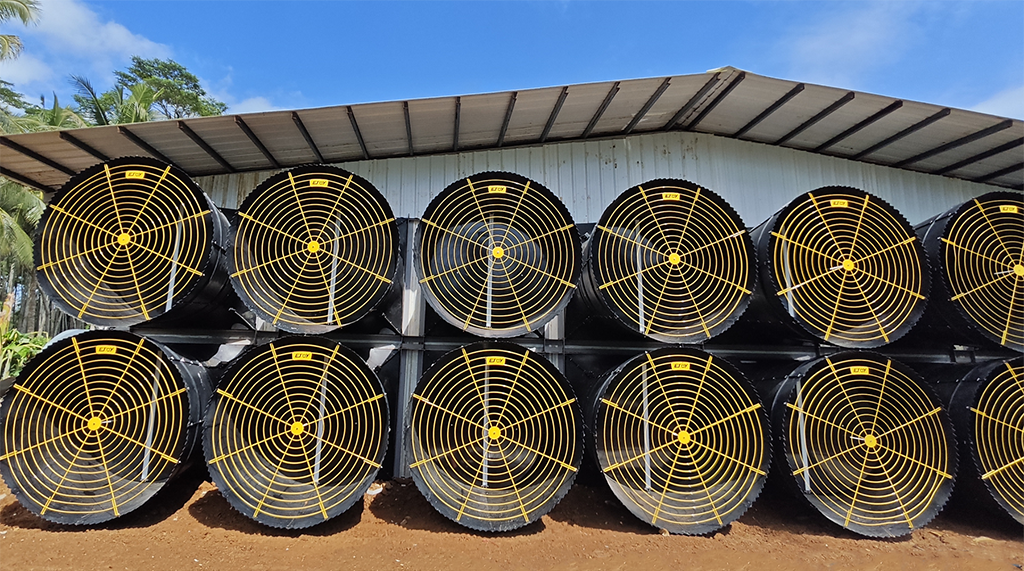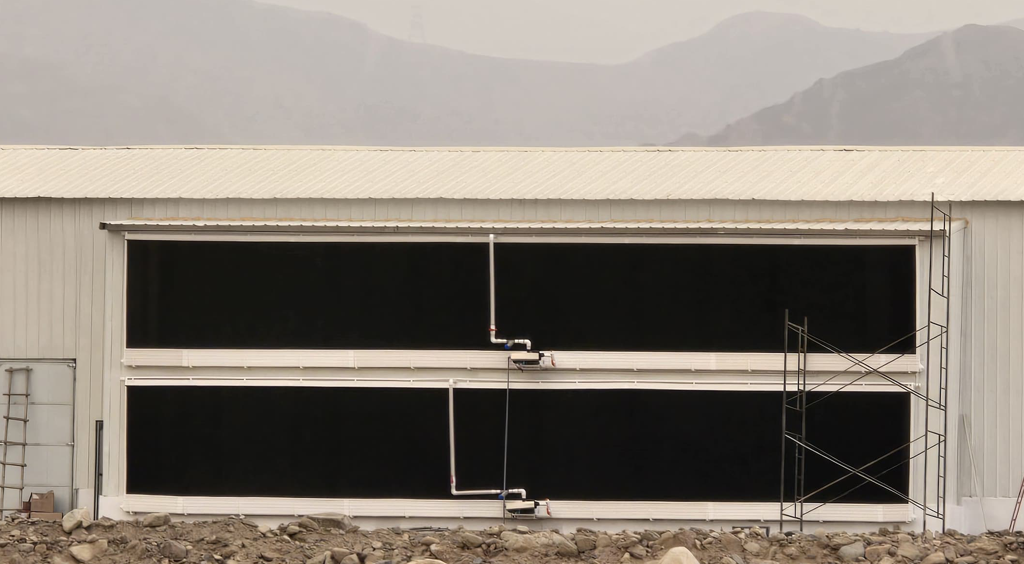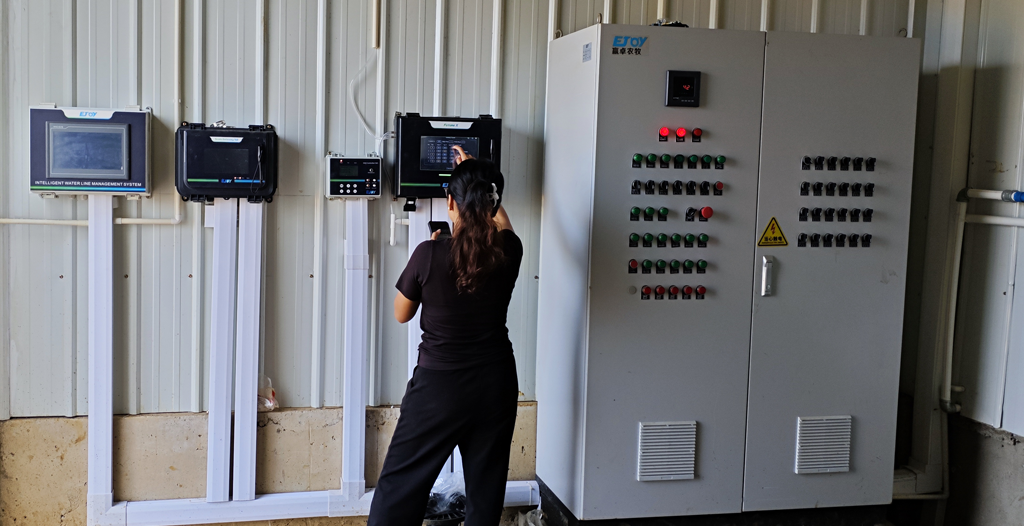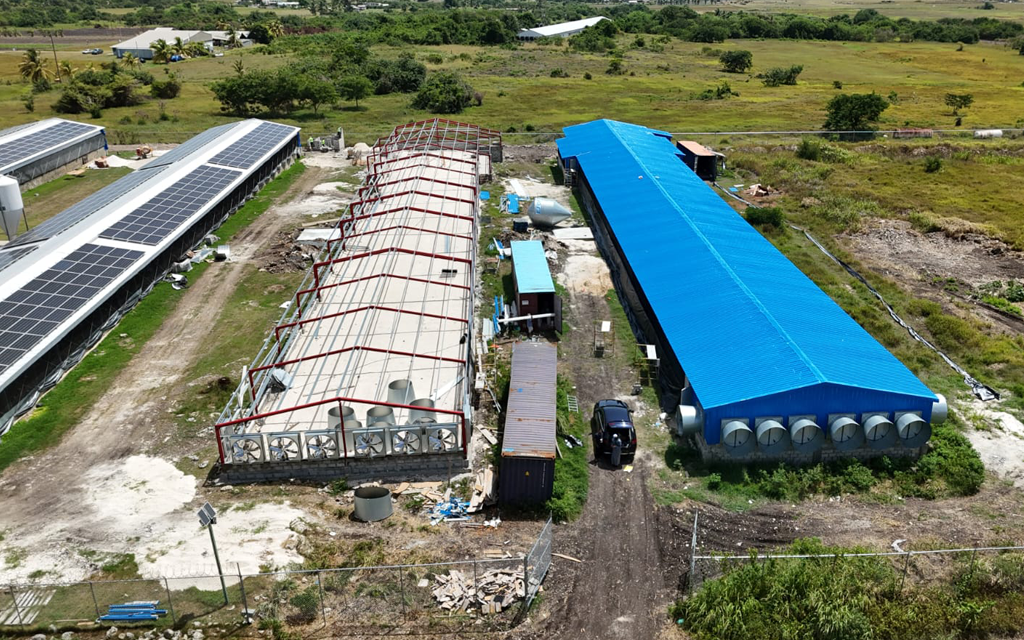Industry news
Winter Broiler House Management: Key Climate Control Strategies for Poultry Farms
Added:2025-11-20
For large-scale broiler producers, winter brings unique challenges: rapid temperature drops, unstable humidity, and cold wind. These factors can severely impact flock health and productivity if not managed properly. This article identifies the critical risk points and shares practical strategies to help poultry producers maintain strict climate control and achieve consistent results throughout the colder months.
Ⅰ. Ventilation Strategies: Choosing the Right Poultry Equipment to Growth Stages
Proper ventilation in broiler houses is the foundation of a healthy environment. Selecting the right ventilation mode at each growth stage not only conserves energy but also supports chicken health. Three primary ventilation modes are commonly used, often in combination, to address winter’s complex conditions.
1. Three Ventilation Modes for Winter Broiler Houses
① Minimum Ventilation (0–21 Days)
- Purpose: Remove ammonia while maintaining warmth.
- Equipment: Ventilation fans with timed operation.
- Critical Tip: Ensure curtains direct airflow along ceilings to prevent cold wind.
② Transitional Ventilation (22–35 Days)
- Purpose: Balance heat removal and temperature uniformity.
- Equipment: Ventilation fans + curtains for mixed airflow.
③ Longitudinal Ventilation (36 Days+)
- Purpose: Rapid heat dissipation in heavy birds.
- Equipment: Ventilation fans paired with cooling pads.
2. Winter Temperature Control: Accurately Calculating Minimum Ventilation in Broiler Houses
Winter conditions below 10°C demand precise minimum ventilation in broiler houses to protect flock health and energy efficiency. Insufficient ventilation leads to ammonia buildup; excessive ventilation risks chilling chicks.
What is minimum ventilation? It refers to using timed fan cycles to provide the minimum required airflow to maintain acceptable air quality—ensuring adequate oxygen and ammonia control while minimizing heat loss. This method is both energy-efficient and safe for winter use.
How to calculate it accurately? Use this practical formula:
Fan Run Time=[(Total Bird Weight×Ventilation Coefficient)÷Fan Capacity]×Cycle Duration–Cycle Duration
Example:
10,000 broilers weighing 0.5 kg each (total = 5,000 kg), outdoor temperature = 5°C (coefficient = 1.0), 1.5 kW fan, 3-minute (180-second) cycle:
Plug values into the formula to determine exact fan-on duration per cycle.
Note: Cycle duration (e.g., 2, 3, or 5 minutes) should be adjusted based on house tightness and stocking density. The ideal setting is confirmed when birds are evenly distributed, not panting, and no ammonia odor is detectable.
II. Temperature & Humidity Control: Step-by-Step Protocol
Maintaining optimal temperature and humidity is critical for broiler growth. Follow our preheating schedule to ensure chick survival and performance:
1. Pre-Placement Heating Schedule
Days Before Placement | Target Temperature |
3 Days | 22–24°C |
2 Days | 26–28°C |
1 Day | 34–35°C (4–6 hours before arrival) |
2. Post-Placement Adjustments
Chicks: Start at 32.6°C, adjust ±1.5°C based on behavior.
Adult Birds: Maintain 20–22°C with 50–65% humidity.
3. Preventing cold wind: The Curtain Solution
Cold wind are a major risk in winter broiler houses. Uncontrolled cold air entering through gaps can cause sudden temperature drops, leading to respiratory stress.
① Use curtains to direct airflow along the ceiling, allowing cold air to mix gradually with warm indoor air.
② Target conditions:
- Ceiling temperature: 27–28°C
- Floor temperature: 25–26°C
III. Core Principle for Winter Management: Observe the Birds, Not Just the Climate Controllers
All environmental parameters are guidelines—the true benchmark is bird behavior:
Chicks huddling → too cold
Panting or wings spread → too hot or poor ventilation
Ammonia smell → insufficient air exchange
Frequent monitoring—especially at night—is essential. Adjust settings in real time based on flock response to maximize efficiency and welfare.
Ready to Upgrade Your Broiler House?
✅ WhatsApp: +86 13395329830






